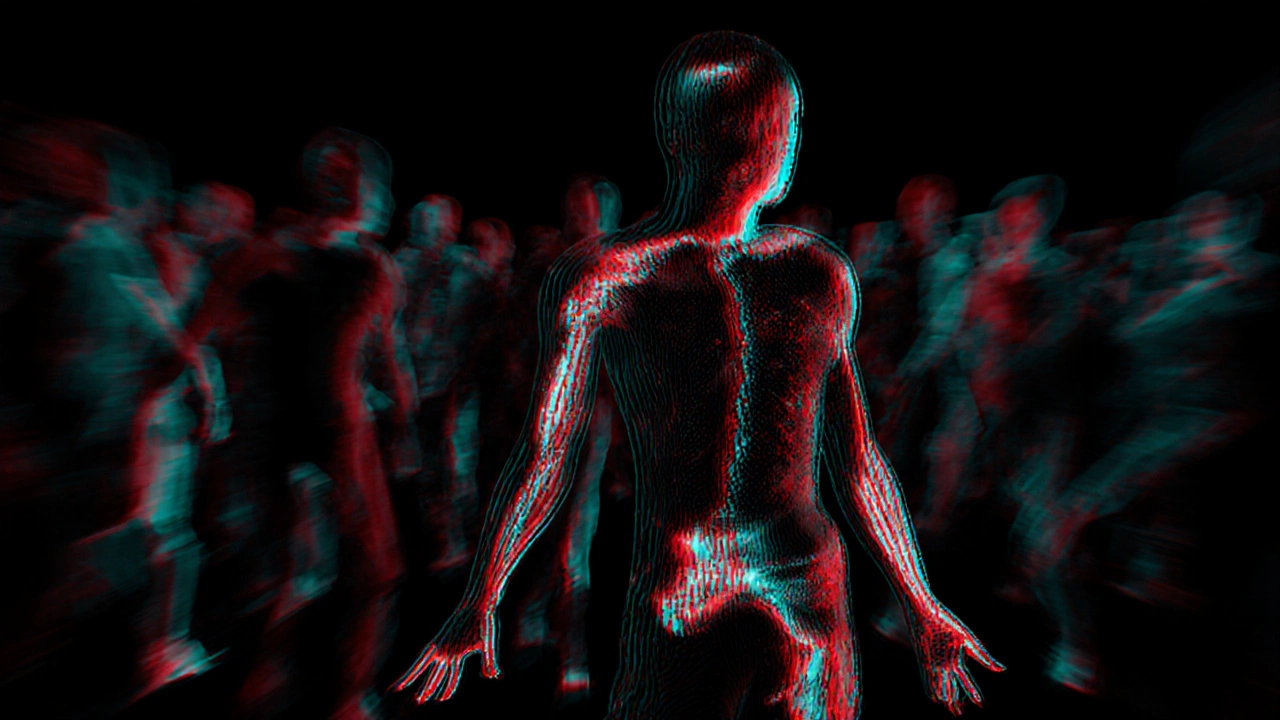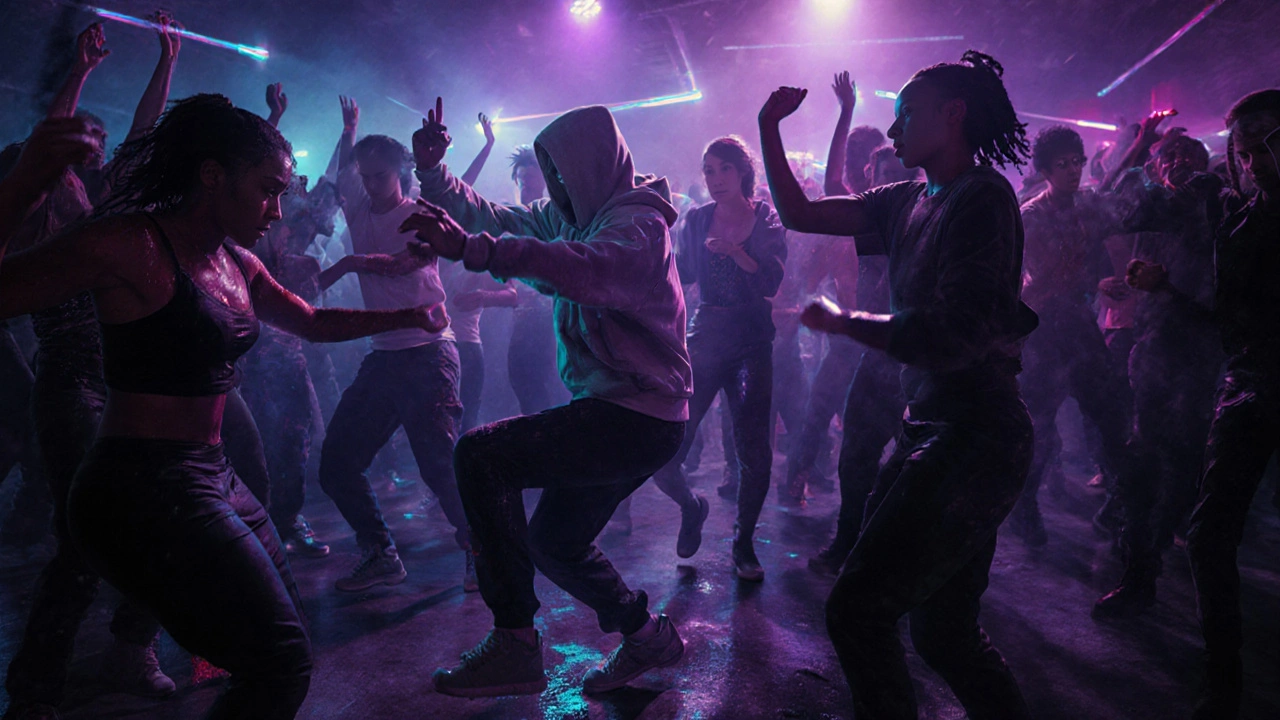Dubstep Drop Timing Calculator
Calculate how many beats occur during silence periods of dubstep tracks based on BPM and duration. Helps understand the rhythmic structure of the music.
Result will appear here
Five years ago, if you saw someone doing a wobbly, jerky dance in the middle of a club, most people would’ve thought they were having a seizure. Now? That same dance is the highlight of the night. Dubstep dance isn’t just a trend-it’s a full-blown movement, born in underground raves and now lighting up stages from Tomorrowland to local warehouse parties. It’s not about perfect form or choreographed routines. It’s about feeling the bass in your bones and letting your body react like a human subwoofer.
What Exactly Is Dubstep Dance?
Dubstep dance isn’t one single style. It’s a loose collection of movements shaped by the rhythm, texture, and drop-heavy structure of dubstep music. Think of it as the physical version of a bass wobble-jerky, unpredictable, and full of sudden stops and explosive motions. Common moves include the dubstep wobble, where you shake your limbs in sync with the low-frequency pulses; the stutter step, a quick back-and-forth hop that mirrors the track’s glitchy percussion; and the head nod, a controlled bobbing that locks into the beat’s groove.
Unlike hip-hop or house dance, which have defined footwork patterns, dubstep dance thrives on improvisation. There’s no right or wrong way to do it. If your body moves in time with the drop, you’re doing it right. That freedom is part of why it’s exploded in popularity. People don’t need years of training to join in. All you need is a beat that makes your chest vibrate and the guts to let go.
Why Now? The Rise of Bass-Heavy Music
Dubstep dance didn’t appear out of nowhere. It rode the wave of a larger shift in electronic music. In the early 2010s, festivals like Electric Daisy Carnival and Ultra began featuring more bass-heavy acts-Skrillex, Excision, Zomboy, and later, artists like Kaytranada and Flume. These producers didn’t just make music-they built sonic experiences designed to shake the ground. And when the bass hits hard enough, your body doesn’t wait for instructions. It reacts.
Platforms like TikTok and Instagram Reels accelerated the spread. Clips of dancers in oversized hoodies, arms flailing in perfect sync with a distorted bassline, went viral. One video from 2023, shot at a Seattle warehouse party, hit 12 million views. It showed a group of strangers, all different ages and backgrounds, moving in unison to a track with no lyrics. No one taught them. They just felt it. That’s the power of dubstep music-it bypasses the brain and speaks directly to the nervous system.
How It Differs From Other Dance Styles
Dubstep dance isn’t a replacement for breakdancing, krumping, or even moombahton. It’s its own thing. Breakdancing is about power moves and acrobatics. Krumping is raw, aggressive, and emotional. Dubstep dance is mechanical-but not cold. It’s the feeling of being a robot caught in a storm.
Compare it to house dance: house is fluid, continuous, and grounded. Dubstep is sharp, staccato, and often off-beat. You don’t glide-you stutter. You don’t spin-you freeze mid-motion and then explode. The music itself dictates the movement. A dubstep track might have 16 seconds of silence, then a drop that lasts 8 seconds and feels like an earthquake. Your body has to match that. You can’t just keep dancing the same way. You have to adapt.
This is why you’ll see people at dubstep shows doing completely different things-even next to each other. One person might be doing a slow arm wave while another is stomping like they’re crushing something underfoot. Both are correct. That’s the beauty of it.

Who’s Dancing? The Demographics Are Changing
Early dubstep dancers were mostly teens and twenty-somethings in the UK and US underground scenes. Now? The crowd is wider. You’ll see college students, parents who came to the festival with their kids, even people in their 50s who’ve never danced before. A 2024 survey of 1,200 dubstep festival attendees found that 38% had never danced to electronic music before 2022. Half of them said they started because they saw someone else doing it and thought, “I could do that.”
It’s not about being cool or fit. It’s about connection. People are tired of polished, Instagram-perfect dance videos. Dubstep dance is messy. It’s sweaty. It’s awkward. And that’s why it feels real. At a bass music event, you’re not watching a performance-you’re part of it. The dance isn’t for the crowd. It’s for you.
How to Start Dancing to Dubstep
You don’t need lessons. You don’t need a mirror. You just need a track and the willingness to move badly at first.
- Find a track with a clear drop. Try “Scary Monsters and Nice Sprites” by Skrillex or “The Drop” by Bro Safari.
- Turn it up. Not loud-blasting. Let the bass shake your ribs.
- Stand still. Close your eyes. Feel where the beat hits your body. Is it in your chest? Your legs? Your head?
- Start small. Wiggle your fingers. Nod your head. Tap your foot. Don’t try to do a full move yet.
- When the drop hits, let your body react. Jerk your arm. Drop your shoulder. Stomp. Freeze. Repeat. No judgment.
- Watch others. Not to copy, but to get ideas. Notice how they use space, timing, and stillness.
- Do it again tomorrow. And the next day. The more you do it, the more natural it becomes.
Some people start by practicing alone in their room. Others jump in at a local bass night. Either way, the first time you let yourself go without worrying how you look? That’s the moment it clicks.

Why It Matters Beyond the Dance Floor
Dubstep dance isn’t just about movement. It’s a cultural reset. In a world where everything is curated, filtered, and optimized, this dance is a rebellion. It says: I don’t need to be perfect. I just need to feel.
It’s also one of the few dance styles that’s grown organically through music, not TV shows or social media influencers. No choreographer designed it. No brand sponsored it. It spread because people needed it. And that’s rare.
At its core, dubstep dance is about releasing tension. The music is chaotic, heavy, sometimes even aggressive. The dance lets you channel that energy without words. It’s therapy with a beat. People tell me they use it to cope with anxiety, grief, even burnout. One woman in Portland told me she started dancing after her dad passed away. “I didn’t cry at the funeral,” she said. “But when I heard ‘Bassnectar’ at a festival, I screamed and shook until I couldn’t stand anymore. That’s when I started to heal.”
Where to Experience It Live
If you want to see dubstep dance in action, you don’t need to fly to Las Vegas. Start local. Check out bass music nights at smaller venues-places that don’t charge $150 for a ticket. In Seattle, the Low End Theory series at The Crocodile hosts monthly bass events. In Austin, Wobbleland brings in underground artists every other month. In Chicago, Low Frequency has been running since 2019 and still sells out.
Festivals like Bass Canyon, Beyond Wonderland, and Electric Forest now have dedicated “bass zones” where the music is heavier and the dancing is wilder. These areas are usually the most crowded-not because they’re the loudest, but because they’re the most alive.
Don’t wait for a big event. Go to a small club. Dance in the back. Don’t look around. Just move. You’ll find others doing the same. And you’ll realize-you’re not alone.
What Comes Next?
Dubstep dance won’t become the next salsa or swing. It’s too raw, too niche. But that’s okay. It doesn’t need to be mainstream to matter. It’s already changed how people experience music. More than that-it’s changed how people experience themselves.
As the music evolves-blending with trap, drum & bass, even techno-the dance will too. New moves will emerge. New subcultures will form. But the heart of it will stay the same: a raw, unfiltered response to sound that hits too hard to ignore.
So if you’ve ever stood at a show, felt the bass crawl up your spine, and thought, “I wish I could move like that”-you already can. You just have to let yourself.
Is dubstep dance hard to learn?
No, it’s not hard to start. You don’t need training or rhythm skills. All you need is to feel the music and move how your body wants to. The more you do it, the more confident you get. Most people who say they can’t dance just haven’t found the right music yet.
Do I need special shoes or clothes for dubstep dance?
No special gear is required. Most people wear comfortable sneakers or boots with good grip, and loose clothing that lets you move freely. Some prefer hoodies or baggy pants because they look cool, but it’s purely aesthetic. What matters is that you can shake, stomp, and freeze without restriction.
Is dubstep dance only for young people?
Absolutely not. While many dancers are in their teens and 20s, people in their 30s, 40s, and even 50s are joining in. One regular at a Seattle bass night is a 62-year-old retired teacher who says dancing helps him manage his arthritis. Movement, not age, is the key.
Can I dance dubstep to other types of music?
Yes. While dubstep dance was born from dubstep music, its style works well with any genre that has heavy bass, glitches, or syncopated rhythms-like trap, future bass, or even industrial techno. The key is the energy, not the genre. If the beat makes you want to jerk or freeze, you can dance to it.
Why do people freeze mid-dance during dubstep tracks?
Freezing is a direct response to the music’s structure. Dubstep tracks often have long builds followed by sudden drops. The silence before the drop creates tension. When the bass hits, your body reacts with a burst of movement-and then, because the rhythm changes or the beat cuts out, you freeze. It’s not choreography. It’s physics. Your body is syncing with the sound.

